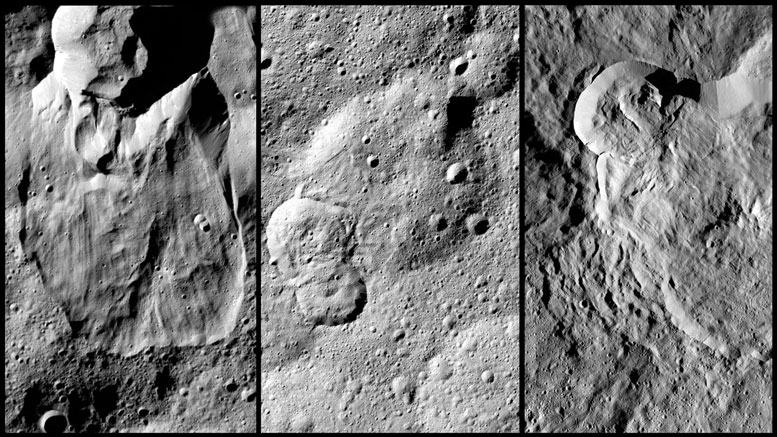
NASA’s Dawn spacecraft has revealed many landslides on Ceres, which researchers interpret to have been shaped by a significant amount of water ice. Figure 1 (left in the montage) shows an example of “Type I” flow features, which are relatively round and large, have thick “toes” at their ends. They look similar to rock glaciers and icy landslides on Earth. Type I landslides are mostly found at high latitudes, which is also where the most ice is thought to reside near Ceres’ surface. Figure 2 (center) shows an example of a “Type II” flow feature. Type II features are often thinner and longer than Type I, and are the most common type of landslide on Ceres. They appear more like the avalanches seen on Earth. Figure 3 (right) shows an example of a “Type III” flow feature at Datan Crater. The study authors interpret Ceres’ Type III landslides to involve melted ice, although scientists do not know if they actually contain liquid water. The authors think Type III landslides are related to impact craters, and may have formed during impact events into the ice on Ceres. The features resemble fluid material ejected from craters in the icy regions of Mars and Jupiter’s moon Ganymede.
A newly published study in the journal Nature Geoscience reveals evidence that dwarf planet Ceres retains a significant amount of water ice, showing how ice may have shaped the variety of landslides seen on Ceres today.
“Images from NASA’s Dawn Spacecraft show that landslides, many of which are similar to those seen on Earth, are very common on Ceres, and further the case that Ceres has a lot of water ice involved in its structure,” said Britney Schmidt, who led the study. She is an associate of the Dawn science team and assistant professor at Georgia Institute of Technology in Atlanta.
Types of Landslides
Schmidt and colleagues identified three types of landslides. Type I, which are relatively round and large, have thick “toes” at their ends. They look similar to rock glaciers and icy landslides on Earth. Type I landslides are mostly found at high latitudes on Ceres, which is also where the most ice is thought to reside just beneath the surface, suggesting they involve the most ice of any of the flow features. Three small Type 1 flows are found in Oxo Crater, a tiny bright crater in the northern hemisphere that hosts an ice deposit at the surface.
Type II features are often thinner and longer than Type I, and are the most common type of landslide on Ceres. The landslide deposits appear similar to those left behind by avalanches seen on Earth.
Ceres’ Type III features may involve a brief melting of some of the ice within the soil-like regolith, causing the material to flow like mud before refreezing. These landslides are always associated with large impact craters, and may have formed when an impact event melts subsurface ice on Ceres. These features have similar appearances to ejected material from craters in the icy regions of Mars and on Jupiter’s moon Ganymede.
“The locations of these different types of features reinforces the idea that the shallow subsurface of Ceres is a mixture of ice and rock, and that ice is most plentiful near the surface at the poles,” Schmidt said.
Astronomers were also surprised at just how many landslides have occurred on Ceres in general. About 20 to 30 percent of craters greater than 6 miles (10 kilometers) wide have some type of landslide associated with them. Such widespread “ground ice” features, which formed from of a mixture of rock and ice, had only been observed before on Earth and Mars.
Implications and Future Observations
Based on the shape and distribution of landslides on Ceres, study authors estimate that the ice in the upper few tens of meters of Ceres may range from 10 percent to 50 percent by volume.
“These kinds of flows are not seen on bodies such as Vesta, which Dawn studied from 2011 to 2012, because the regolith is devoid of water,” said Carol Raymond, deputy principal investigator for the Dawn mission, based at NASA’s Jet Propulsion Laboratory, Pasadena, California.
Now in its extended mission phase, Dawn is using its ion engine to swivel the plane of its orbit around Ceres to prepare for observations from a new orbit and orientation. At the end of April, the spacecraft will be directly between the sun and the mysterious Occator Crater. In this geometry, Dawn may deliver new insights about the reflective material of Ceres’ most famous “bright spot,” the highly reflective center of Occator that has been named Cerealia Facula.
Reference: “Geomorphological evidence for ground ice on dwarf planet Ceres” by Britney E. Schmidt, Kynan H. G. Hughson, Heather T. Chilton, Jennifer E. C. Scully, Thomas Platz, Andreas Nathues, Hanna Sizemore, Michael T. Bland, Shane Byrne, Simone Marchi, David P. O’Brien, Norbert Schorghofer, Harald Hiesinger, Ralf Jaumann, Jan Hendrik Pasckert, Justin D. Lawrence, Debra Buzckowski, Julie C. Castillo-Rogez, Mark V. Sykes, Paul M. Schenk, Maria-Cristina DeSanctis, Giuseppe Mitri, Michelangelo Formisano, Jian-Yang Li, Vishnu Reddy, Lucille LeCorre, Christopher T. Russell and Carol A. Raymond, 17 April 2017, Nature Geoscience.
DOI: 10.1038/ngeo2936

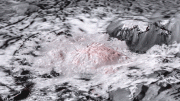
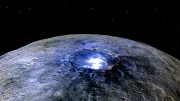
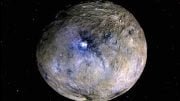
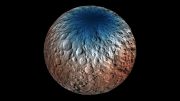
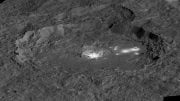

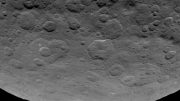
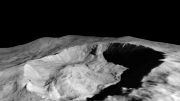
Be the first to comment on "NASA’s Dawn Spacecraft Reveals Evidence for Ground Ice on Dwarf Planet Ceres"